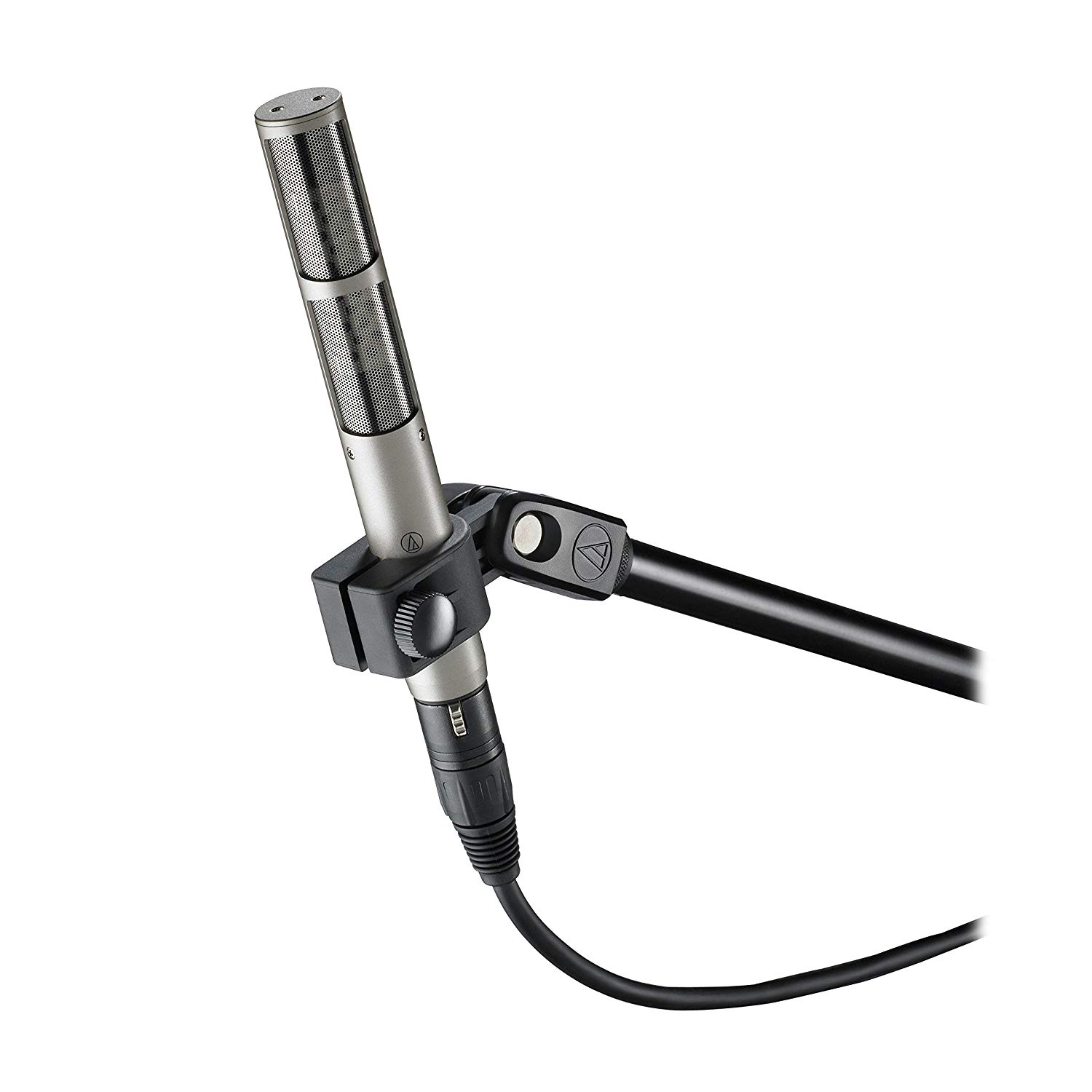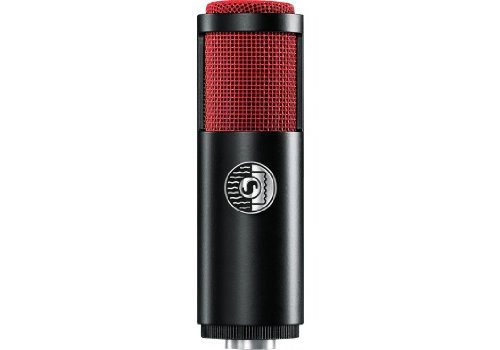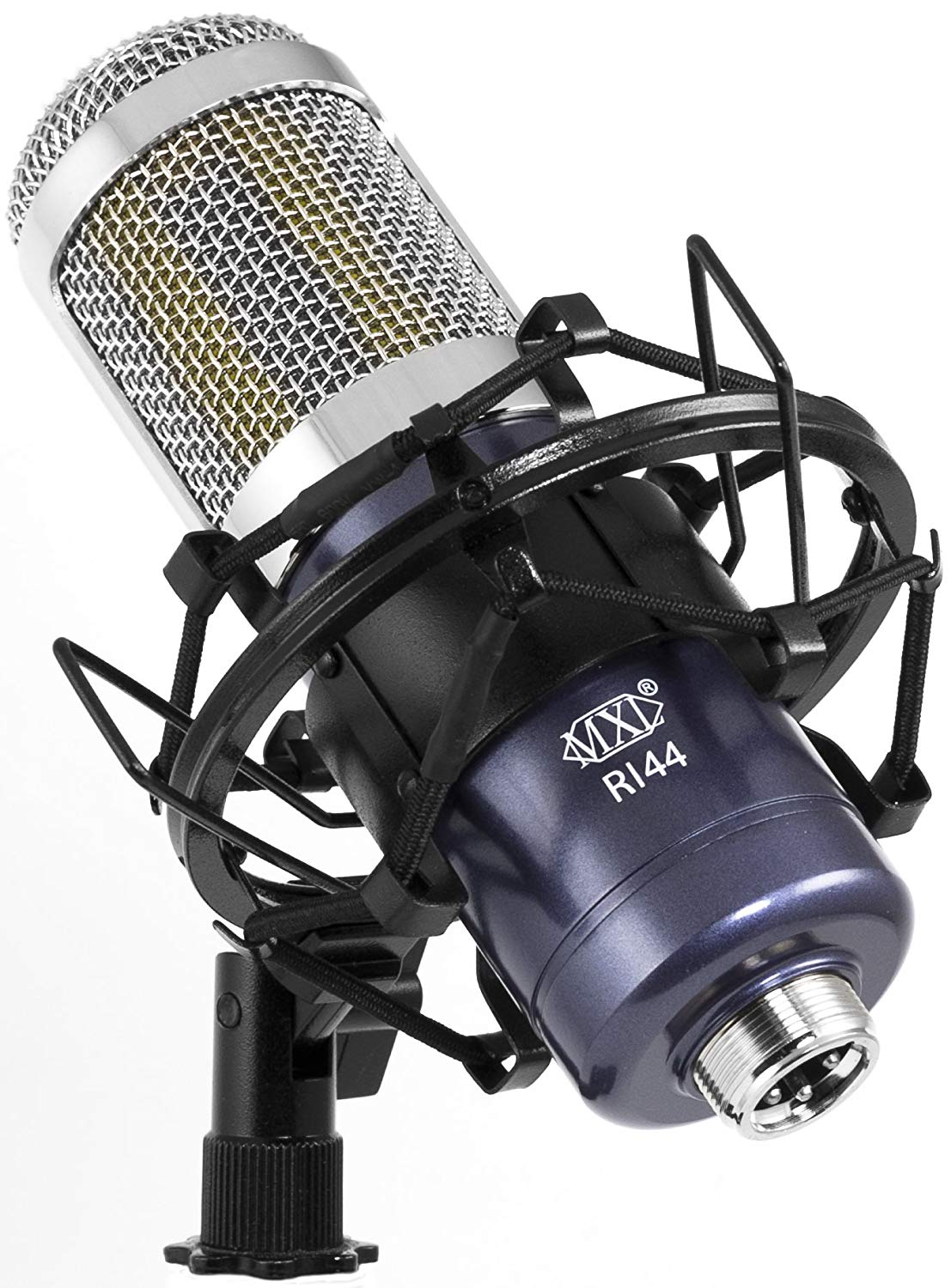After many decades of undeserved oblivion ribbon microphones, today again at the peak of popularity. Ribbon microphones allow you to perfectly record vocals, bass guitar, string, wind instruments.
By the way, check our top picks for Best Ribbon Microphones in 2023
You may also like: Best ribbon microphones 2020
For professionals, such equipment is indispensable, since with its help it’s really possible to catch any sound vibrations at a high level. Ultra-low noise levels, high performance, low transformer resistance, precise interaction between electronics and ribbon are provided with microphones that have been recognized by millions of professionals.
It’s only necessary to choose the right equipment for the user’s capabilities, requests, and also the features of use.
| Product | Details |
|---|---|
|
|
|
|
|
|
Audio-Technica AT4081
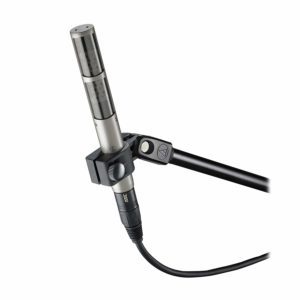 Audio-Technica AT4081 is at the top of my go-to list. This ribbon microphone complemented the 40 series. The new microphone has a warm, natural sound and provides accurate, detailed transmission of all its nuances. It also has the reliability and durability of Audio-Technica and is able to withstand high levels of sound pressure. AT4081 can be used at concerts, in recording studios, and on the radio.
Audio-Technica AT4081 is at the top of my go-to list. This ribbon microphone complemented the 40 series. The new microphone has a warm, natural sound and provides accurate, detailed transmission of all its nuances. It also has the reliability and durability of Audio-Technica and is able to withstand high levels of sound pressure. AT4081 can be used at concerts, in recording studios, and on the radio.
The model has a figure-of-eight polar pattern, thereby providing high-quality simultaneous recording of sounds, the sources of which are located in front of and behind the microphone. The microphone is equipped with powerful neodymium magnets, have active electronics. The frequency range of Audio-Technica AT4081 – 30 Hz … 18 kHz.
In the production of ribbon for Audio-Technica AT4081, a new technology from Audio-Technica – MicroLinear is used which protects the dual ribbons from lateral flexing and distortion.
Main features:
- Smooth, warm and natural sound;
- Audio-Technica AT4081 is handmade in Japan;
- Like all 40 Series microphones, each Audio-Technica AT4081 is tested for compliance with quality requirements;
- MicroLinear technology, which gives greater durability than the market average;
- Audio-Technica AT4081 comes with a 5/8″-27 threaded adapter, windscreen, and protective carrying case.
Technical characteristics:
- Element – Ribbon
- Polar Pattern – Figure-of-eight
- Frequency Response – 30-18,000 Hz
- Impedance – 100 Ohm
- Maximum input sound level – 150 dB
- Noise – 25 dB
- Signal/noise ratio – 69 dB
- Dynamic range – 125 dB
- Phantom Power Requirements – 48V
- Sensitivity – 42 dB
- Weight – 152 g (5.4 oz)
- Dimensions – 155.0 mm (6.10″) length, 21.0 (0.83″) mm diameter
The AT4081 is a versatile instrumental microphone. I would recommend using Audio-Technica AT4081 for vocals, wind, string and other acoustic instruments, orchestras, drum overheads, horns, and guitar cabinets. It doesn’t take a lot of places, looks stylish and not heavy at all.
Nady RSM-4
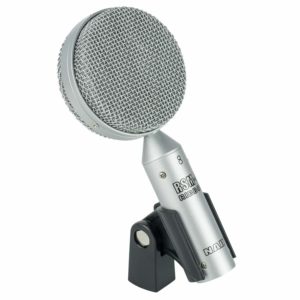 Nady RSM-4 is a neoclassical studio ribbon microphone with a distinctive warm sound, soft high and low frequencies.
Nady RSM-4 is a neoclassical studio ribbon microphone with a distinctive warm sound, soft high and low frequencies.
Designed for guitar cabinets, vocals, acoustic, wind and string instruments, orchestral and choral groups, as well as a whole range of sound applications.
Main features:
- It brings you the unparalleled vintage ribbon sound characteristics;
- Versatile physical and acoustic design;
- The Nady RSM-2 ribbon microphone is one of the cheapest, so it is available even for budget and home studios.
Technical characteristics:
- Polar Pattern -Figure-of-eight
- Frequency Response – 30-18000 Hz (+/- 3 dB)
- Sensitivity – 55 dB (0 dB = 1 V / Pa)
- Impedance – 200 Ohm
- Maximum input sound level – 165 dB
- Signal to noise ratio – 70 dB
- Connector – 3-pin XLR
- Body – metal
- Size – head diameter – 76 mm (2.99″), body – 165 (6.49″) x 22 (0.86″)
- Weight – 794 g (28 oz)
I recorded speech, vocals, and brass instrument with the Nady RSM-4 microphone. My findings on the Nady ribbon microphone are as follows. This model is very entry-level and corresponds to its low price. It allows you to record something similar to the sound of a ribbon mic, but I would like more detail.
In my opinion, the use of a microphone is limited to budget recording studios and special requests for creative experiments with sound, for example, when searching for a specific microphone for recording instruments.
Thanks to the exceptional beauty of the design, the Nady ribbon microphone looks beautiful and very expensive.
Be careful, in no case don’t apply phantom power to the ribbon microphone – otherwise, there is a chance to burn it, as warned in the instructions!
Royer Labs R-121
 The R-121 microphone is the very first and at the same time the most significant product of Royer. Released in 1998, the R-121 combines the main achievements and benefits of Royer microphones, such as the Offset Ribbon capsule technology (patent No. 6.434.252) with 2.5-micron aluminum ribbon and the unique Royer output transformer.
The R-121 microphone is the very first and at the same time the most significant product of Royer. Released in 1998, the R-121 combines the main achievements and benefits of Royer microphones, such as the Offset Ribbon capsule technology (patent No. 6.434.252) with 2.5-micron aluminum ribbon and the unique Royer output transformer.
R-121 is able to withstand extremely high SPL levels (above 135 dB) without distortion and has an extremely low level of intrinsic noise.
Main features:
- An extremely versatile and convenient microphone that is suitable for a wide range of tasks;
- Has a compact lightweight body;
- Its high output level is comparable to the level of a dynamic microphone;
- The use of advanced materials and the combination of new technologies with traditional;
- Colors: Dull Satin Nickel/Matte Black Chrome
In many professional studios around the world, the R-121 microphone is the number one standard for recording guitar combo amplifiers, percussion, and brass instruments. In addition, R-121 shows an outstanding result when recording acoustic guitar, piano, string, and woodwind instruments.
R-121 is insensitive to changes in humidity and temperature, has a robust design, as evidenced by a lifetime warranty from the manufacturer.
Technical characteristics:
- Polar Pattern -Figure-8
- Frequency Response – 30 -15,000 Hz +
- Sensitivity – 55 dB (0 dB = 1 V / Pa)
- Impedance – 300 Ohm
- Maximum input sound level – 135 dB
- Connector – Male XLR 3 pin
- Size – head diameter – 58mm L, 25mm W (6.13″ L, 1″ W)
- Weight – 244g (8.6 oz)
Thanks to the use of advanced materials and a combination of new technologies with traditional ones, this model is an extremely versatile and convenient microphone that is suitable for a wide range of tasks, whether it be recording electric guitars, wind instruments or percussion instruments.
Avantone Pro CR-14
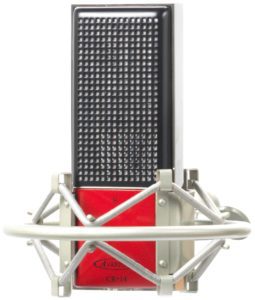
Avantone CR-14 is designed specifically for a professional studio, where it’s important to gain high-quality sound recording. The microphone is made in China, but my first impressions of the microphone were quite favorable.
The microphone comes in a nice suitcase. The Avantone CR-14 microphone has a 5-year warranty! In the suitcase, there is the holder and the microphone itself, placed in a separate wooden box.
As you have already noticed, the microphone has a rather peculiar rectangular shape, painted in the color of red wine, it looks quite elegant. The rugged CR-14 microphone body and inner assembly parts are precision machined of brass. The body of a reliable microphone justifies the manufacturer’s warranty.
The microphone records sound in the frequency range from 30 Hz to 15 kHz with an accuracy of ± 3 dB. Avantone CR-14 is a fairly sensitive microphone (-52 dB). It’s characterized by high resistance to high sound pressure levels (up to 145 dB!).
Main features:
- Unique, elegant retro-styled body design;
- Use for mic guitar amps & cabinets, acoustic guitar, mandolin, drum overheads, orchestral, woodwind & brass instruments, studio solo vocals, group vocals, and simultaneous vocal duets, etc;
- It goes with a padded wooden box, shockmount, metal road case.
Technical characteristics:
- Polar Pattern -Figure-8
- Frequency Response – 30Hz – 15kHz
- Sensitivity – 52 dBv
- Impedance – 600 Ohm
- Maximum input sound level – 145 dB
- Connector – XLR
- Size – 37 mm (1.45″ ) x 175 mm (6.89″)
- Weight – 496 g (16 oz)
The microphone is very sensitive, but you need to take into account the fact that it has a figure-8 pattern that requires some experience when working. You must take into account and listen to the acoustics of the room where the recording is made. In any case, Avantone CR-14 is quite an interesting microphone.
Blue Microphones Woodpecker Ribbon Microphone

Blue Woodpecker is a great condenser microphone with a figure-8 pattern. Thanks to its unique active pattern and exotic wood finish, this microphone is one of the most interesting and beautiful ribbon microphones on the market.
Woodpecker is the newest addition to the Blue microphone family. Provides a wide frequency response necessary for modern recording quality. Each component of this microphone is carefully selected and tested. The microphone is assembled manually with quality control at all stages.
Main features:
- This mic is warm and clear with a good pick-up range;
- The microphone requires phantom power +48 V;
- Woodpecker comes with a custom shockmount and is packed in a wooden case.
Technical characteristics:
- Polar Pattern -Figure-8
- Frequency Response – 20Hz – 20kHz
- Sensitivity – 26.0 mV/Pa a 1kHz (1 Pa = 94 dB SPL)
- Output Impedance – 50 Ohm
- Signal/noise ratio – 72 dB
- Maximum input sound level – 136 dB
- Size – 227 mm (8.93″ ) x 45 mm (1.77″)
- Weight – 725 g (25 oz)
With its focused mid-range, ultra-smooth top end, and outstanding bass response, the Woodpecker captures the essence of any recorded sound. In this case, the microphone is designed for professional recording of a variety of instruments and vocals.
MXL R144
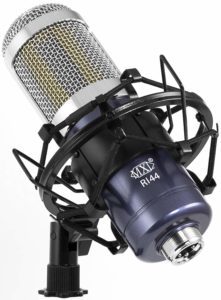
MXL R144 is a studio ribbon microphone. A versatile microphone, combined with a figure-eight pattern and a 1.8-micron aluminum R144 ribbon, offers stunning sound for vocal and instrumental recordings. R144 brilliantly works with acoustic instruments, strings, and wind instruments, and provides high SPL levels.
Main features:
- Excellent microphone for wide use;
- High SPL capability;
- Outstanding side rejection, and precise directivity;
- Natural sound and the stunning realism of vocal and instrumental recordings;
- Compact design.
Technical characteristics:
- Polar Pattern -Figure-8
- Frequency Response – 20Hz – 17kHz
- Sensitivity – 56 dBv
- Impedance – 250 Ohm
- Maximum input sound level – 130 dB
- Size – 47 mm (1.85″ ) x 171 mm (6.73″)
- Weight – 400 g (14.1 oz)
Beyerdynamic M130
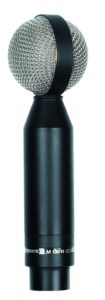
This microphone is not accidentally in the list of the best. This unique double ribbon microphone is an excellent solution for use in a recording studio. The special design of the microphone makes a recording in any conditions as simple as recording in the studio. In any case, this model makes it possible to achieve excellent results. The microphone shows the greatest efficiency when recording vocals, percussions, etc.
Main features:
- M 130 shows excellent results when recording or broadcasting using Mid-Side technology to create a natural stereo image;
- Due to its rugged design, this microphone can be used outside the studio as well as in it;
- M 130 can be used to record the background noise of a concert hall without unwanted resonances;
- this microphone effectively copes with the recording of vocal ensembles, percussion and mounted tomsж
- Thanks to its clear, uncolored sound, the M 130 is perfect for demanding audio applications such as digital recording and direct recording to disc.
Technical characteristics:
- Polar Pattern -Figure-8
- Frequency Response – 40Hz – 18kHz
- Impedance – 200 Ohm
- Connector: 3-pin XLR male
- Size – 128 mm (5.03″ )
- Weight – 150 g (5.29 oz)
Rode NTR
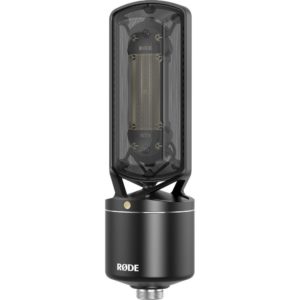
The design of this ribbon microphone includes one of the thinnest ribbons used in the manufacture of such microphones. The NTR ribbon, which is only 1.8 micrometers thick, has an optimal frequency range that provides the highest level of microphone sensitivity.
The ribbon microphone Rode NTR has a lot of advantages:
- ultra-low noise level;
- high performance;
- the low resistance of a transformer;
- the most accurate interaction between electronics and ribbon.
Due to the design features, the NTR microphone is used with a variety of preamps without the additional gain requirements of many other ribbon offerings. An integrated shockmount that is installed by the developers into this microphone is so effective that it is more than enough – an external shockmount is not required.
Acoustic transparency when using this microphone is enhanced since the mesh has low density and high rigidity.
Technical characteristics:
- Polar Pattern – Figure-8
- Frequency Response – 20Hz – 20kHz
- Sensitivity – 30.5 dB
- Impedance – 200 Ohm
- Maximum SPL – 130 dB
- Size – 216 mm (8.50″ ) x 65 mm (2.55″)
- Weight – 1047 g (36.93 oz)
MXL R77
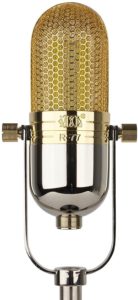
MXL R77 is a universal ribbon microphone that guarantees an unmatched natural and maximum realistic sound.
This device can be used for recording both vocals and instruments. This microphone from the MXL brand is made from high-quality materials, and at the same time, it looks just great because of the use of white and gold colors in the case coloring.
Main features:
- MXL R77 beautifully records vocals, acoustic instruments, strings, wind instruments and can work with the most demanding podcast;
- Directivity allows you to reject unwanted sounds, keep the focus on the main source and absorb the sound from behind;
- The kit includes a sturdy wooden case, shockmount, cable, manual application guide, and cleaning cloth.
Technical characteristics:
- Polar Pattern – Figure-8
- Frequency Response – 20Hz – 18kHz
- Impedance – 270 Ohm
- Maximum SPL – 135 dB
- Size – 180 mm (7.08″ ) x 65 mm (2.55″)
- Weight – 860 g (30.33 oz)
More than just a beautiful microphone, the MXL R77 is a powerful and versatile recording tool for all kinds of instruments.
Shure KSM313
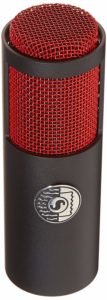
KSM313 is a world-renowned bi-directional studio ribbon microphone with new SHURE patented technologies.
Dual-Voice technology defines such properties as the difference in frequency characteristics from the front and back sides of a microphone. The front side is characterized by a softer sound, which makes it ideal for recording sound from guitar amplifiers. Conversely, the rear part of the microphone is able to perfectly record the crystal clear sound of vocals or acoustic musical instruments.
Main features:
- The KSM313 microphone has the highest quality electronic components;
- It is a representative of Shure’s top league of microphones;
- The mic is hand-assembled in the USA;
- The basis of the microphone is the revolutionary Roswellite ribbon, which replaced the traditional foil ribbon. It has unsurpassed elasticity and “shape memory”, which ultimately gives super elasticity even at the highest sound pressure levels.
Technical characteristics:
- Polar Pattern – Figure-8
- Frequency Response – 30Hz – 15kHz
- Sensitivity – 54 dB
- Impedance – 270 Ohm
- Maximum SPL – 146 dB
- Size – 43 mm (1.69″ ) x 135 mm (5.31″)
- Weight – 400 g (14.1 oz)
The set of the Shure KSM313 includes a shockmount, a protective velvet case for a microphone and a plastic transport case.
Royer Labs R101
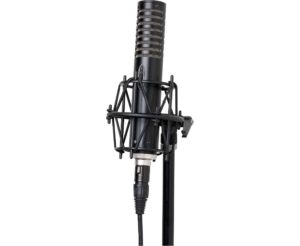
R101 Royer Labs is a passive bi-directional ribbon microphone. In developing this model, the manufacturer tried to overcome the typical limitations of ribbon microphones. Its sensitivity is one of the highest among existing models of this type – it is equal to 3.9 mV/Pa.
In addition, it is durable. Special ribbon works reliably even at maximum sound levels. The ribbon of this microphone is made of aluminum 2.5 microns. It is moved to the front of the microphone. This arrangement allows you to increase the maximum sound pressure level and give a brighter response.
Main features:
- Designed for both home and professional use;
- This is a great choice for recording electric guitars, wind instruments, and drums;
- Temperature and humidity don’t affect the ribbon element.
Technical characteristics:
- Polar Pattern – Figure-8
- Frequency Response – 30Hz – 15kHz
- Sensitivity – 48 dB
- Impedance – 300 Ohm
- Maximum SPL – 135 dB
- Size – 200 mm (7.87″ ) x 36 mm (1.41″)
- Weight – 483 g (17.03 oz)
FAQ
Q: Why do I need a ribbon microphone?
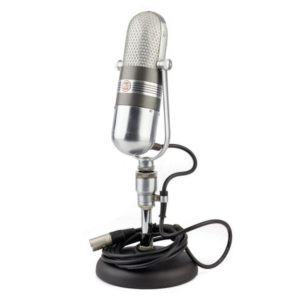 Ribbon microphones in most cases are used by professionals. With their help, recording studios, television, and radio stations are equipped in a complex. Such products are chosen because of their absolute advantages over many analogs.
Ribbon microphones in most cases are used by professionals. With their help, recording studios, television, and radio stations are equipped in a complex. Such products are chosen because of their absolute advantages over many analogs.
After all, there is no resonance of its own here, and the user can adjust the frequency bands to suit a variety of equipment requirements and conditions of use. The effect of soft compression, a kind of coloring of the upper part of the tone, high-quality recording of a variety of stringed instruments – ribbon microphones significantly expand the capabilities of any user.
Q: What are the principles of operation of a ribbon microphone?
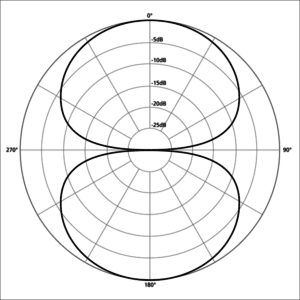 A ribbon microphone is a unique kind of dynamic microphone, the design of which is based on a thin electrically conductive ribbon (often made of aluminum) placed between two poles of a magnet.
A ribbon microphone is a unique kind of dynamic microphone, the design of which is based on a thin electrically conductive ribbon (often made of aluminum) placed between two poles of a magnet.
Unlike traditional moving-coil microphones, the ribbon element responds to changes in the speed of airborne particles, not to sound pressure. When the ribbon vibrates in a magnetic field, it generates a tiny voltage that corresponds to changes in air velocity.
In classic ribbon microphones, this voltage level is very low compared to conventional dynamic microphones, so an output signal amplifier is needed, which increases both resistance and voltage. Choosing a preamp for ribbon microphones in this way is crucial. A cheap option is not enough.
Due to the fact that in its design the ribbon microphone uses such a thin and fragile element, it is capable of transmitting the smallest nuances of the sound. Ribbon microphones have a wide dynamic range, they perfectly work with high sound pressure in the high-frequency range (try recording the woodwinds and percussion).
The design itself makes this microphone a bi-directional by default. Such microphones are ideal for recording stereo, as well as in conditions where you don’t need sound and noise from a nearby source (for example, broadcasting).
Q: How to store and operate a ribbon microphone correctly?
 Ribbon microphones are very sensitive and quite fragile. Vintage models can be broken just by strong air flow, high volume or even if you just keep them lying on the side. Vertical storage is the best way to store ribbon mics.
Ribbon microphones are very sensitive and quite fragile. Vintage models can be broken just by strong air flow, high volume or even if you just keep them lying on the side. Vertical storage is the best way to store ribbon mics.
Operation of a ribbon mic without a pop filter in the near zone is extremely undesirable and can easily damage the membrane. The accidental phantom power supply can also damage the microphone. But, if you are ready to put up with these subtleties and observe a number of precautions, you automatically get a “matt” sound characteristic of a ribbon mic.
Q: What distinguishes ribbon microphones from dynamic and condenser?
Although ribbon microphones are a kind of dynamic microphones by their principle, they sound more like condenser microphones due to their extremely light aluminum diaphragm.
These microphones have no impressive high frequencies, but they are appreciated for their smooth transmission of the rest of the frequency range.
However, ribbon microphones are more sound pressure sensitive than condensers and react differently depending on how close to the sound source they are positioned.
Guitars, horns, and drums benefit from ribbons because they smooth out the sometimes harsh highs that these instruments can produce.
Conclusion
Ribbon microphones have surprisingly realistic sound, an incredible volume and rich, full-fledged character of the sound transmission of voice and acoustic instruments. This technology makes it possible to enrich modern digital recording with analog warmth and expressive musicality.
Today, this type of microphone is returning to the market thanks to the efforts of a number of companies such as Royer, Shure, and Audio-Technica.
Modern ribbon microphones, such as the Rode NTR, are designed to withstand the toughest conditions of everyday use. Royer, of course, follows the good old traditions of ribbon microphones, which allows us to confidently rank its products as the best professional Hi-End microphones. Beyerdynamic microphones are also highly valued by professionals and actively used by many legends of rock music.
